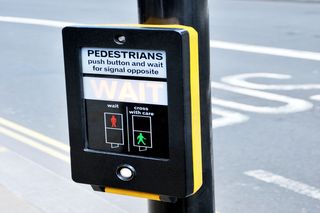Smart pedestrian crossing initiative gathers momentum in London
London Mayor Boris Johnson has welcomed the smart technology programme, which aims to ease congestion and increase road safety.

Smart crossings are coming to Balham and Tooting Bec as part of a TfL initaitive designed to ease road congestion and ensure pedestrians, cyclists and drivers can move about London more easily.
Trials of the smart pedestrian crossings - or to give them their proper name, Split Cycle Offset Optimisation Technique (SCOOT) - will run from this summer until the end of the year.
Innovation like this is key to keeping London moving efficiently and making our roads safer for everyone to use.
The idea to use smart technoogy to reduce congestion and increase safety was conceived following the influx of people in London during the 2012 Olympics.
The system uses "stereoscopic vision technology" to track pedestrians within specific zones and control traffic signals. SCOOT determines which group of pedestrians should cross next by calculating how many people and waiting and how long they've waited there.
If a large number of pedestrians are crossing the street, the system can increase the crossing time. It cannot decrease the minimum crossing time. There's also an intelligent 'call cancel' function that can determine whether a pedestrian has abandoned plans to cross the road or crossed before the green light to do so.
"I am delighted that London is the first city in the world to be trialling this cutting-edge equipment, which will benefit pedestrians across the city. This really is a fantastic example of how London is leading the way by using 21st century technology to help make it easier for people to get around our great city," said Mayor of London, Boris Johnson.
"Innovation like this is key to keeping London moving efficiently and making our roads safer for everyone to use."
Get the ITPro. daily newsletter
Receive our latest news, industry updates, featured resources and more. Sign up today to receive our FREE report on AI cyber crime & security - newly updated for 2024.
The technology may be implemented throughout London if successful in its initial trials. Some 550 crossings at 200 locations spread across 30 London boroughs have been equipped with the Pedestrian Countdown technology. Installation and maintenance costs of the system have not been revealed as of yet.
SCOOT will also not record data on specific people.
Johnson and TfL hope the effort will reduce the deaths and injuries at the busy crossings, as the area around Balham and Tooting Bec has proved deadly in the past. A lorry killed a pedestrian outside Balham Underground Station last January.
Tooting resident Dennis McGoldrick was hit by a number 131 bus outside Tooting Broadway Station, a stop on the same road as Tooting Bec. Tooting councillors have called the Broadway crossing "the most dangerous in Wandsworth."
The Guardian put together a map of cyclist and pedestrian casualties between 2000 and 2010 confirming the area's danger. It shows a cluster of pedestrian fatalities outside both Tooting Bec and Balham stations.
TfL, together with London boroughs, are working together on a number of initiatives with the aim of reducing the number of people killed or seriously injured on the capital's roads by 40 per cent by 2020.
"The London Road Safety Council is proud of the great work that has been done in London to reduce road casualties on our roads, but we are not complacent and recognise that more needs to be done. We welcome these innovative trials and fully support the six road safety commitments being made by Transport for London," said Councillor Val Clark, Chairman of the London Road Safety Council.
"We feel that they provide a vital focus on key areas of concern and provide a framework for strong partnerships to enable further collision and casualty savings to be made in the Capital."




